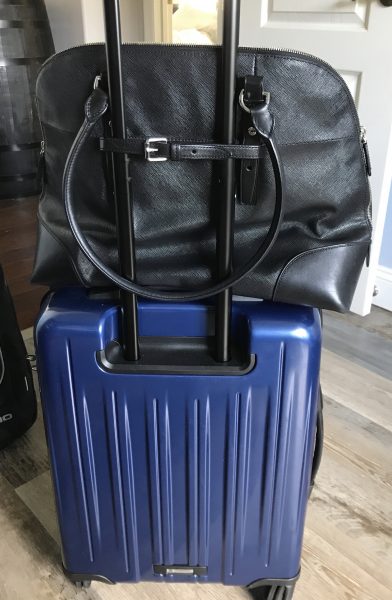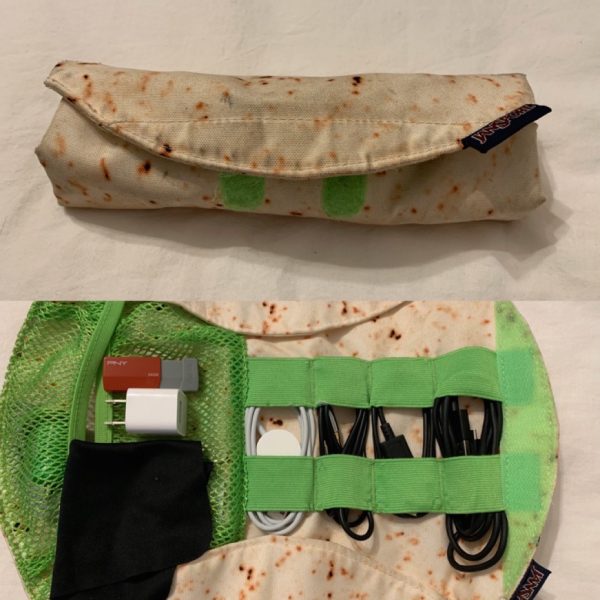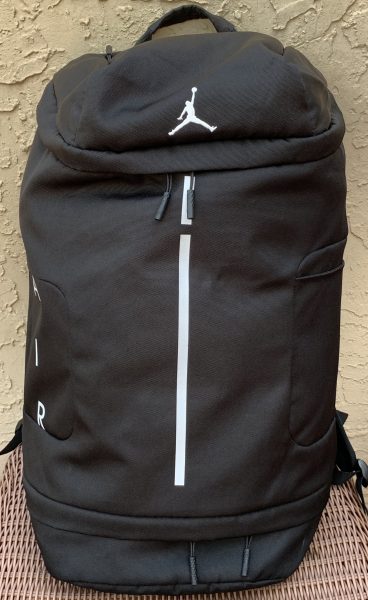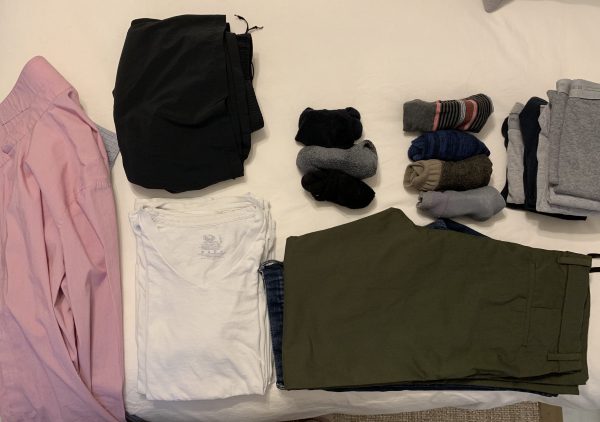Posted October 15, 2019
By PAMELA GIGANTI-BUNGE
Dawn Blackledge is on an airplane every week for work. As the senior director of National Accounts on Premise for Coastal-Pacific Wine & Spirits, she travels throughout the United States and Europe to meet with clients and attend trade shows. She says packing efficiently and having what you need at your fingertips is key to a successful trip.
“You learn to pack light in this industry. If you check, you lose your luggage and that screws with your whole meeting,” she said.
Sarah Schlichter of SmarterTravel.com says there are many advantages to using a carry-on rather than checking a suitcase, even on trips for up to two weeks.
“Avoiding baggage fees, not having to worry about the airlines losing my luggage and being less encumbered by heavy bags while navigating a new place,” she says are all advantageous. “And while other flyers are waiting at baggage claim watching the belt go round and round, I’m breezing past them to hop in a cab and get on with my day.”
According to the travel management app, Lola.com, 1.3 million people hit the road or the sky to travel for work every day in the United States. Forty-seven percent of them are female. For a business traveler, like Blackledge making the most of her time is key. After six years of packing for trips, she has refined her routine in a way she feels is not only best for her, but for her sales team as well.
“If you’re traveling with me, we’re not checking bags and you’re getting TSA Precheck,” she said. “I will not wait at security and I will not wait at baggage claim.”

When it comes to luggage, she uses a four-wheeled carry-on Tumi suitcase. She says this type of bag can be easily maneuvered in any direction no matter where you need to take it. She says she chose Tumi because of its durability and warranty, but that any quality bag will work.
Her other carry-on is a Tumi tote bag that doubles as a purse and has a strap on the bag that allows her to securely slide the tote over the handles of the carry-on. A few years ago, she wanted to simplify even more and swapped out her laptop for a tablet because it doesn’t need to be pulled out separately while going through security.
“Once I realized everything was on the cloud, I purchased an iPad, so I could take the same luggage and a smaller purse. If I have a presentation, I take a jump drive and I can connect with my iPad.”
When deciding what to pack in her carry-on suitcase, Blackledge starts with the trip’s agenda and selects versatile outfits to fit her needs. If she has a trade show and knows she’ll be on her feet much of the time, she packs flats or low heels.
“If I’m in meetings all day and then I have a night time event, I’ll wear my two-piece suit and then take a dressy top for dinner,” she explained. She says women travelers are at an advantage because of dresses.
“I can go 12 days in a carry-on because we can wear dresses. If I don’t know the agenda or I don’t know the kind of attire, I can take a very simple dress that I can either dress up with jewelry or throw my work jacket on and go.”
For shorter trips, Blackledge says the key to packing less is to start with your shoes.
“You may enjoy wearing brown one day and black one day, but if you’re going on a two-day trip, you pick one color and you go with it,” she said.
Travel writer, Loren Bell of Lonely Planet says three is the magic number when packing. “Three pairs of socks. Three pairs of underwear. Three shirts. Wear one, wash one, dry one. Choose light, flowing, quick-dry cotton-poly blends in matching colors that handles wrinkles well.”

When loading the suitcase, Blackledge puts the basics in first, a pair of black heels and flip flops, iPad and office gear, a jacket or a sweater, a book and small Bose headphones, running shoes and workout gear, including a water bottle.
For a three to four-day trip, she will throw in a pair of tan wedges. Blackledge has invested in wrinkle-free clothes and rolls, rather than folds them. She also uses small packing cubes for certain items, such as silk tops. Workout clothes are rolled, then stuffed, along with pairs of socks into her sneakers to save space. She wears a suit on the plane with a pair of flats. Her favorite travel hacks are having an extra set of her makeup and toiletries always at the ready.
Blackledge says these kits contain smaller versions of what she uses at home and remain in her suitcase at all times, including a small travel size hair brush. She saves space by using the hotel’s shampoo, conditioner and other items, including the hotel iron, rather than a travel steamer to take out wrinkles.
Phillip Giganti also works for Coastal-Pacific and is a part of Blackledge’s team. As the director of National Accounts, he’s been traveling for the past two years and has started an Instagram blog about his adventures. He’s also my brother. But lugging his luggage around, a roller bag and a bulky laptop briefcase, got old fast.
He too decided there had to be a better way. “I wanted to consolidate everything as much as possible. I’m 6-foot tall. I like to sit in the aisle. Since I’m tall, I don’t like having anything under my seat in front of me.”
But packing his clothes and laptop all together in one roller bag proved to be inconvenient as well. “I wanted to be hands free. I don’t want to have to check in a bag and I don’t want to have to worry, do I have room to put my bags somewhere,” he said.

That’s when he got the idea for stowing all of his items in a single backpack. Giganti uses a Nike Air Jordan bag with a round zip at the top and a compartment on the bottom that looks as if it was designed to hold a basketball. The backpack is roughly 24 inches in height and 12 inches across. The bottom compartment is roomy enough for a least two pairs of shoes and is also a good place to hold dirty clothes because it’s set off from the rest of the bag and is expandable.
When choosing what to pack, Giganti says bring clothes you can wear more than once, such as a pair of jeans. A suit jacket can be paired with two or three different pairs of pants, creating different outfits.
Like Blackledge, Giganti also prefers to roll his clothes to save space. For a two to four-day trip, he packs underwear and white t-shirts for each day, socks, a pair of dark wash jeans and a pair of dress pants, two solid colored shirts to mix and match with the suit pants and jeans, one or two ties and a suit jacket or sports coat. He also packs two pairs of gym shorts, which can double as pajamas, one small bag of toiletries and an accessories bag for charging cords, and headsets.

The key to getting all of these items neatly in the backpack all comes down to the roll and fold. Giganti first lines the bottom of the bag with the rolled underwear and t-shirts. He then places the rolled pants on top.
Next, comes the two dress shirts, not rolled, but folded neatly and placed on top of the pants. If you don’t want to wear the suit jacket, he says a great hack is to take one arm of the jacket and pull it inside out, then tuck that side up and under the opposite shoulder. This will keep it from wrinkling too much. Then fold the jacket in half and then in half again and place it on top of the shirts.
The toiletry bag will fit on top of the shirts and underneath the jacket. He says, keep it simple, a toothbrush, toothpaste, a small face wash, lotion, a razor or small beard trimmer, and a cologne.
Giganti also takes advantage of the hotel shampoo, conditioner, lotion and hair dryer. When packing the shoes in the bottom compartment, Giganti stuffs his socks into his sneakers and loafers. He then packs them into plastic grocery bags along with a dryer sheet to eliminate odors. Another hack is to pack the dress shirts with collar stays to keep them from wrinkling. His laptop fits neatly in an inside compartment.
Like Blackledge, he says wear the suit and dress shoes on the plane. “When we put this team together, my boss told me she hired five boys,” says Blackledge.
“Every single one of them checked a bag when I first met them; now none of them do.”
